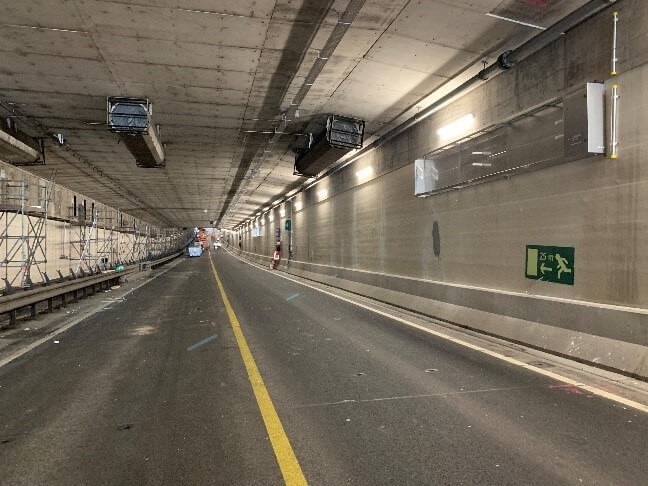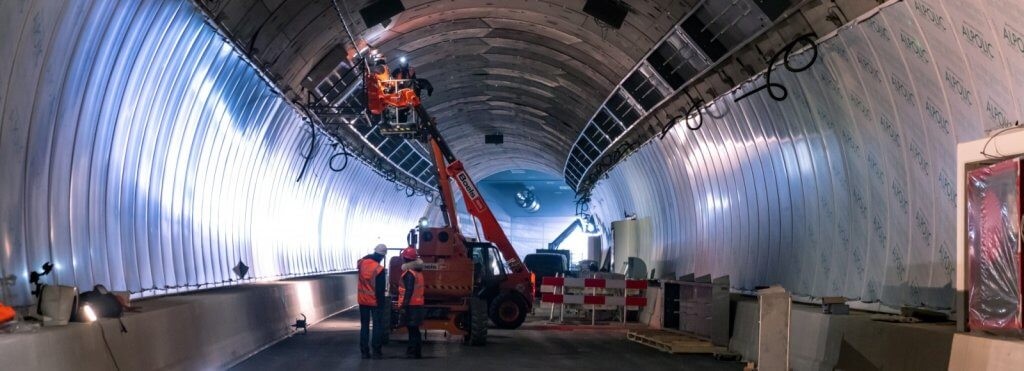Note: This is an English translation of the Dutch post, originally located at Vridiair Blog
The construction and operation of tunnels present several challenges, including the exposure of local residents to particulate matter. Particulate matter, small particles released from combustion processes such as traffic, can cause serious health problems for people living near tunnels. Protecting local residents from the harmful effects of particulate matter is therefore of great importance. In this text, we will examine the different aspects of particulate matter, the risks to residents living near tunnels, and the FDRS air cleaner as a solution and preventive measure.
What is Fine Dust and Why is it Harmful?
Particulate matter consists of tiny particles less than 10 micrometers in diameter (PM10) and even less than 2.5 micrometers in diameter (PM2.5). These particles can come from a variety of sources, including traffic, industry, agriculture and household activities. When people inhale these particles, they can penetrate deep into the lungs and even enter the bloodstream, leading to respiratory problems, cardiovascular disease, worsening asthma and other health problems.

Risks for Residents Living Near Tunnels
Residents living near tunnels are at increased risk of exposure to particulate matter because of the concentration of vehicles passing through the tunnel. Vehicle exhaust, including particulate matter, is often concentrated in the tunnel environment and can then enter surrounding areas through vents and other ducts. This can lead to increased exposure to particulate matter for people living near tunnels, with all the associated health risks.
Solutions and Preventive Measures
Several solutions and preventive measures are possible to protect residents living near tunnels from particulate matter:
1. Advanced Ventilation Systems.
Implementing advanced ventilation systems in tunnels does not help reduce the concentration of particulate matter and other pollutants. These systems do provide a continuous supply of fresh air. An air cleaning system is needed to remove pollutants, thereby reducing exposure to particulate matter. Particulate matter can come from a variety of sources, including traffic, industry, agriculture and household activities. When people inhale these particles, they can penetrate deep into the lungs and even enter the bloodstream, leading to respiratory problems, cardiovascular disease, worsening asthma and other health problems.
2. Air purification
Using an air purifier helps remove particulate matter and other pollutants from the air in tunnels. The FDRS air purifier works with an air flow of positive ions to reduce the presence of particulate matter.
3. Green Infrastructure
Integrating green infrastructure, such as green roofs and vertical gardens, near tunnels can help absorb particulate matter and improve air quality. Plants can filter pollutants from the air and contribute to a healthier environment for local residents.
4. Education and Awareness
Providing education and awareness to tunnel residents about the risks of particulate matter and the preventive measures available is essential. By making people aware of the health risks of particulate matter and informing them of ways to reduce exposure, they can better protect themselves.
5. Regulation and Enforcement.
Establishing and enforcing strict regulations regarding air quality in tunnels is essential to protect the health of local residents. Governments can set standards for maximum exposure to particulate matter and other pollutants and ensure that tunnel operators comply with these standards through regular monitoring and inspections.
6. Monitoring and Reporting.
Monitoring air quality in and around tunnels is crucial for identifying potential health risks and taking timely action. By taking regular measurements and generating air quality reports, governments and tunnel operators can evaluate the effectiveness of preventive measures and make adjustments where necessary.
7. Collaboration with Stakeholders
Involving all relevant stakeholders, including local residents, local communities, tunnel operators, health experts and government agencies, in developing and implementing measures to protect against particulate matter is very important. By working together and exchanging information, effective solutions can be found that take into account the needs and concerns of all stakeholders.

Future Prospects and Sustainable Solutions.
While protecting local residents from particulate matter may seem like a complex challenge, there are solutions that help improve air quality. StaticAir designed the FDRS system to help reduce particulate matter and improve overall air quality around tunnels. This advanced air cleaner is part of a broader approach, including innovation in ventilation technologies, promotion of electric vehicles, and investment in green infrastructure.
Protecting local residents from particulate matter near tunnels requires a coordinated and multidisciplinary approach, involving different strategies and measures. By investing in StaticAir's FDRS system, green infrastructure, education and regulatory enforcement, we can protect the health and well-being of local residents and strive for a cleaner and healthier environment for all. With continued efforts and collaboration, we can create a sustainable future where the impact of particulate matter on health is minimized


